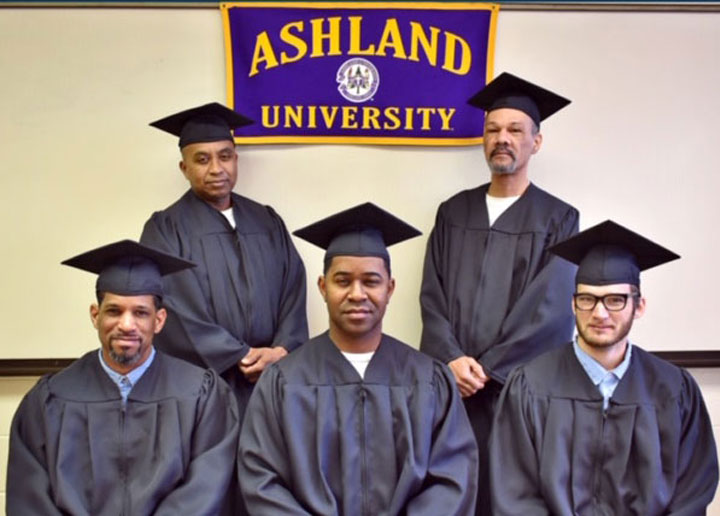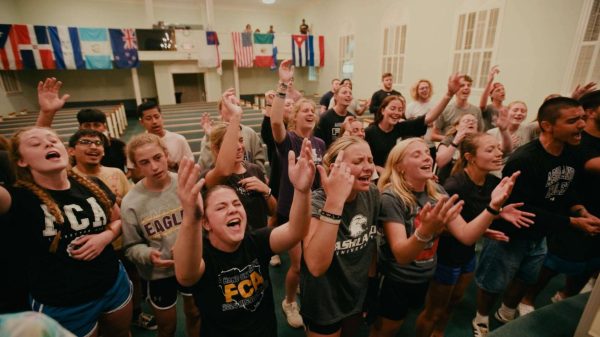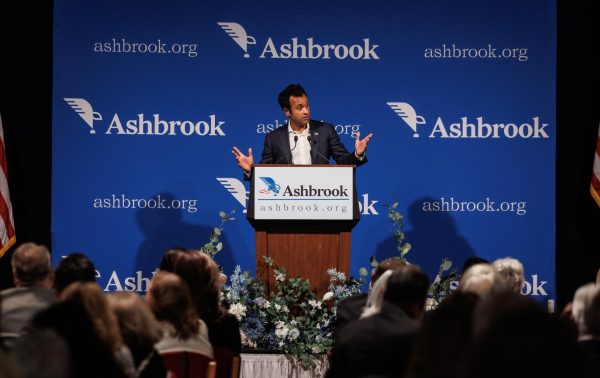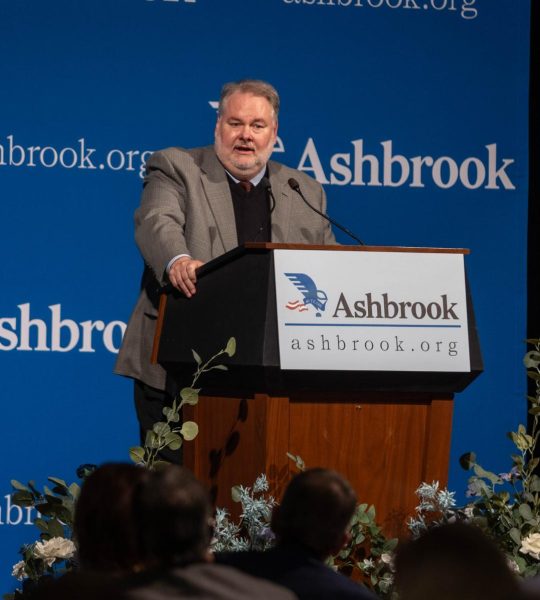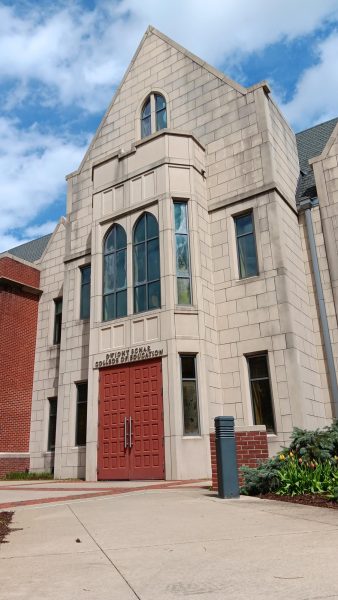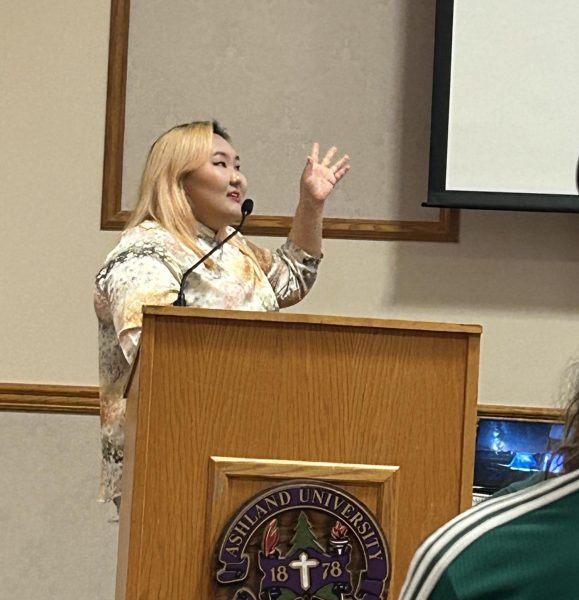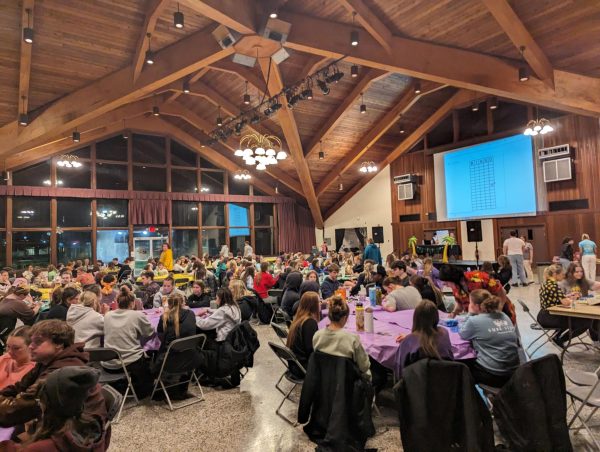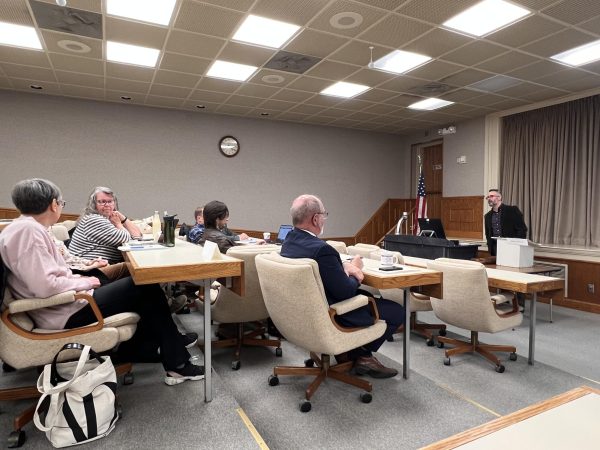AU correctional education program continues to add new sites
Graduated students from the correctional education program.
September 18, 2020
After postponing development over the summer due to the ongoing COVID-19 pandemic, Ashland University is expanding their Correctional Education department by implementing 24 new sites.
The program now has an outreach of 100 sites in 11 different states and the District of Columbia Jail. One such site in North Dakota adds the State to the list of Arkansas, Arizona, Florida, Georgia, Louisiana, Minnesota, Missouri, New Mexico, Ohio, West Virginia and the District of Columbia.
“We had a handful that we would’ve opened in the summer but since COVID started affecting us in February and March we had changed our mind early on about expansion,” Denise Justice, executive director of correctional education said.
According to Justice, the program adds new sites almost every semester, sans summer 2020. In fall 2019, 10 sites were added, and then 18 more in the spring semester of 2020.
“For the most part we have people and prisons all over beating our doors down,” Justice said. “Ashland has been the forefront of correctional education in the country for many many years.”
AU began its first correctional education endeavors at the Ohio State Reformatory in 1964, making it the longest continuously running program in the US. In the 1980s, AU became a college provider in the Ohio Department of Rehabilitation and Corrections (DRC) and has seen steady growth ever since.
“When I started in 2015 we had around 500 students and now we have about 3500 incarcerated students working on their associate and bachelors degrees, that’s significant growth and even more students than we have on the main campus,” Todd Marshall, vice president of correctional education and innovation said. “We’re in discussions with about half a dozen more states who would like us to come. And in some states where we’re at, we might be in four or five prisons but eventually they want us to be in every prison in the state.”
Up until 2018, Justice worked for the Ohio Department of Rehabilitations and Corrections (ODRC) as the school superintendent for all of the adult prison education programs.
“Ashland has supported people being on the state, regional, and national correctional education association board, Ashland won the contract to publish the Correctional Education Association journal, three of us that work for Ashland are past presidents of the International Correctional Education Association (CEA) and we’ve been doing conferences and presentations for a long time so we have colleagues nationwide,” Justice said. “When we started getting the Pell Experimental Sites Initiative in 2015, we already had a broad base that knew about us and that allowed us to expand really fast.”
The initiative, launched by the U.S. Department of Education, provides need-based Pell grants to people in state and federal prisons through partnerships with 65 colleges in 27 states.
“The Pell grants go right to the university, it’s revenue to AU,” Marshall said. “That revenue covers all of our expenses that go to site directors, the instructors and technology and textbooks for students. Plus after it’s paid all the expenses, that money goes back to campus, faculty, sports programs and the whole university.”
The Pell Second-Chance Experimental Sites Initiative requires that you have a release or release consideration date. Similarly, AU’s program requires that applicants must be within 10 years of their release or release date consideration.
There are no stipulations on crime that would bar a person from receiving Pell eligibility and therefore AU eligibility. A satisfactory disciplinary record is required to become enrolled in AU’s program however; this is based upon each individual facility’s policy.
Marshall says that incarcerated individuals with a good disciplinary record jump at the opportunity to get their degree while in prison.
“A lot of the incarcerated individuals’ main concern with education is that they want employability when they are released,” Marshall said. “Because if you have a felony it’s definitely going to be harder to find a job. In fact a lot of our students go for communication and business degrees in hopes of starting their own businesses.”
AU’s program offers six bachelor of arts and two associate of arts degrees in general studies, multidisciplinary studies, business, communication and religion among others.
“We continue to evaluate our curriculum semester to semester, as we follow AU’s ‘Accent on the Individual,’ we want to provide the curriculum that meets student needs and is best for them so we continue to evaluate that,” Marshall said.
The program is conducted primarily on online learning applications like Blackboard and Canvas, where students can complete coursework on tablets and chromebooks loaned out to them by AU.
The devices are meant solely for academic purposes and have firewalls that prevent students from using open web browsing, photography and other components. The students are allowed to complete coursework and contact their instructors from the devices.
To access other assets a corrections student might need, they must seek assistance from site directors.
“Site directors are generally full time Ashland employees and they help the students fill out application paperwork, financial aid paperwork, access records and hand out textbooks and technology at the beginning of the semester,” Marshall said. “Ideally they meet with students on a weekly basis to help encourage them or say ‘hey you’re falling behind in this class or you missed an assignment.’ In essence, they are the university in a suitcase, they’re our boots on the ground. They do a little bit of everything.”
Many of AU’s tenured and tenure track faculty members teach in corrections as well as adjuncts.
“If a faculty member is teaching, that member might be teaching from a classroom, from their office or from a coffee shop,” Marshall said. “And we have instructors in other states, so they just have to login and they can upload their content and interact with their students whenever they’re on the web. It’s just like what’s happening on campus right now due to COVID.”
Marshall says that most students in the program are highly motivated and work full time jobs outside classes.
“They’re normal working adults that might work in the kitchen, cleaning, doing yard work …. and then they get up early or stay up late and that’s when they do their homework,” he said.
All of the courses offered through the corrections program are the same as courses offered to students on campus. In accordance with the Higher Learning Commission, universities are not allowed to water-down coursework difficulty or expectations for incarcerated students.
“The English 101 that a student takes on campus is exactly the same as the English 101 that an incarcerated student takes,” Justice said.
According to “College for Convicts: A case for Higher Learning in American Prisons (2014),” the recidivism rate drops to 13.7% with an associate’s degree, and even lower to 5.6 with a bachelor’s degree.
“There’s always going to be a need for this program,” Justice said. “We keep inmate populations busy, we help them to think better and smarter which in turn keeps them from violence and bad choices when they are released. Institutions want that and inmates want that.”
If incarcerated individuals are released and they are still Pell eligible there are “continue after release” options that allow released students who have not finished their degree to continue their education.
Students will be mailed books and materials so long as they mail them back when they are done; the only thing a student has to provide for themselves after being released is their own computer
Justice believes that AU’s corrections program will continue to grow for a number of years because it is “scalable.” Because of Pell grants, facilities don’t need to spend any money other than desks and tables so it is a win-win for both prisons, the Department of Corrections and AU.
“The thing is, somewhere around 90% of all prison inmates are gonna get out at some point in their life,” Marshall said. “You want them to be an educated person who can get a job, contribute to society, and be a healthy normal individual when they get out. You don’t want them to come out with no way of getting a job, then they will revert to crime and bad choices. This program is a lifeboat for them.”
Correctional education classes will begin on Sept. 21 for a 12-week semester.


